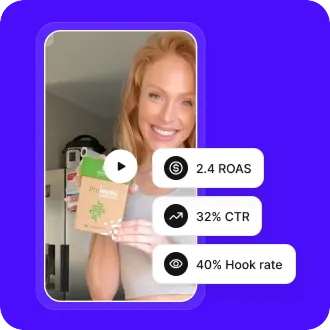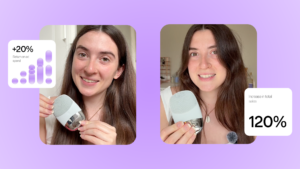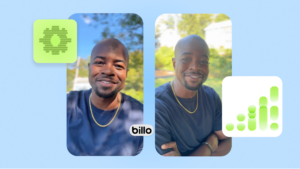Data Driven Ads in 2025: Privacy, Targeting & Creative That Drives ROI
I lead the paid marketing team at Billo, focusing on performance, testing, and growth that scales.Over the past 6 years, I’ve worked across digital marketing - from running campaigns to building the strategies and systems behind them.What drives me is problem-solving. I like turning complex questions into simple, testable answers, and making decisions that actually drive impact.

In 2025, data driven ads sit at a crossroads: brands need sharper targeting and proof of lift, yet privacy rules and platform shifts are eroding legacy signals.
As the UK’s scrutiny of Google’s ad changes underscores the pace of regulatory change, marketers can’t rely on yesterday’s playbook. Gartner projects most targeting will hinge on modeled or consented first-party data, making data driven advertising a privacy-first discipline rather than a cookie-led one.
The winners will pair data driven ads with rigorous experimentation and transparent value exchange – earning consent while proving causality.
TL;DR:
- Data driven ads in 2025 are powered by first-party and privacy-compliant data.
- Privacy regulations (EU-first, global ripple) make consent and transparency essential.
- Success depends on balancing precision targeting with authentic creative.
- Measurement has shifted beyond clicks to lift, CPA, and lifetime value.
- Creative performance is the new edge – authentic creators4A0FFA26 beats polished studio ads.
What Are Data Driven Ads (And How They Work Today)
Data driven ads are digital campaigns that use consumer and performance data to inform every stage of ad delivery. This includes who sees it, when they see it, and what message is shown. Instead of broad demographic targeting, advertisers rely on behavioral signals, purchase history, and contextual cues to predict intent.
In 2025, this increasingly means leaning on first-party data and privacy-compliant modeling rather than third-party cookies.
Here’s how the process works:
- Data Collection: Brands gather signals from consented customer interactions, CRM records, or in-app behavior.
- Segmentation And Modeling: These inputs are layered with machine learning to build predictive segments. For e.g., “likely repeat purchasers” or “cart abandoners.”
- Activation: Ads are delivered dynamically, adjusting creative and placement in real time.
- Measurement And Optimization: Feedback loops test variations and refine targeting, with performance data guiding the next cycle.
At its best, data driven advertising bridges relevance and respect: giving users content that feels personalized without crossing privacy boundaries. The result is more efficient spend and higher lift compared to guesswork-led campaigns.
Marketers who master this workflow will not only protect themselves from regulatory headwinds but also build more trust-driven relationships that compound over time.
Why Data Driven Ads Can Be Great (And Where They Fail)
When executed well, data driven ads give brands an unmatched ability to reach the right people with the right message at the right time.
They cut waste, drive higher ROI, and help marketers prove the impact of every dollar spent. But when misused, they can backfire – leading to wasted budgets, missed audiences, and even eroded trust.
Where They Shine:
- Precision Targeting: By using behavioral and contextual signals, advertisers can serve ads that feel relevant instead of random.
- Better ROI: Testing variations and optimizing with real-time feedback ensures that budgets flow to what actually works.
- Scalability: Once a high-performing audience or creative is found, campaigns can be scaled quickly with confidence.
Where They Fall Short:
- Over-Reliance On Data Signals: Not all data is accurate or fresh, and flawed inputs can mean irrelevant targeting.
- Privacy Pushback: Without clear consent, personalization can feel invasive, hurting brand reputation.
- Creative Blind Spots: Strong targeting can’t overcome weak ads. Poor creative still sinks campaigns, no matter how advanced the data.
Data driven advertising is powerful, but it isn’t foolproof. Success comes from balancing precision with creativity, and personalization with respect for user boundaries.

Find the Right Creators for Your Brand
Privacy & Compliance Essentials (EU-First, Global Aware)
Regulation is reshaping the way data driven ads operate. The EU has set the tone with GDPR and ePrivacy rules, creating the strictest standards for consent and data use. By 2025, these frameworks influence global advertising strategies, even for brands outside Europe.
Key compliance essentials marketers must navigate:
- Explicit Consent Requirements: Opt-in is no longer optional. Brands must make consent clear, easy to understand, and freely revocable.
- Data Minimization: Collect only what is necessary. Over-collecting data not only increases compliance risk but also erodes user trust.
- Global Ripple Effects: From the UK’s oversight of Google’s ad commitments to California’s CPRA updates, localized policies are converging toward stricter consumer protections. Advertisers must adapt globally, not just regionally.
- Platform Shifts: Walled gardens (Meta, Google, TikTok) are doubling down on privacy-compliant tools like cohort-based targeting, on-device processing, and modeled attribution.
The takeaway: privacy compliance isn’t a box-checking exercise – it’s the foundation for sustainable ad performance. Brands that adopt a compliance-first mindset earn not just legal safety, but also long-term trust and loyalty.
Targeting & Channel Mix In 2025
The playbook for data driven ads is evolving fast. With cookies fading and privacy walls rising, marketers are diversifying both how they target and where they spend. Instead of relying on a single “hero” channel, brands in 2025 are building flexible, multi-channel mixes supported by privacy-compliant targeting.
Smarter Targeting Approaches
Targeting begins with first-party data at the core. Brands are deepening their use of CRM records, email interactions, and loyalty program data to build precise, consent-based audiences. This foundation is reinforced with contextual and cohort-based targeting, where ads are matched to relevant content environments or grouped audiences rather than individuals.
To scale reach beyond their known customers, advertisers increasingly turn to lookalike and modeled audiences. They use AI-powered models to predict high-value prospects while still respecting strict privacy frameworks. Together, these tactics create a layered, resilient approach to reaching the right users without overstepping compliance boundaries.
Channel Priorities For Marketers
- TikTok & Short-Form Video: Still driving top-of-funnel discovery with authentic, creator-driven ads that blend into feeds.
- Meta & Instagram: Remain strong mid-funnel performers, especially with Advantage+ automations that help optimize spend.
- Search & Retail Media: Google, Amazon, and retailer networks offer intent-rich placements closer to purchase.
- Emerging Channels: Connected TV (CTV) and streaming ads gain traction as brands seek incremental reach in brand-safe environments.
Winning in 2025 means balancing reach and precision. You should be anchoring on first-party audiences, but layering in contextual, modeled, and cross-channel activations to maximize performance while staying compliant.
Creative Performance As The New Advantage
As targeting signals decline, creative has become the biggest driver of data driven ads performance. In 2025, strong creative isn’t just a differentiator, it’s the competitive edge. Brands that once poured budgets into granular audience targeting are now investing in creative testing, iteration, and storytelling powered by real performance data.
The shift is clear: ads no longer win simply because they reach the right audience. They win because they hold attention, build trust, and convert. That’s why creators and UGC-led content dominate across TikTok, Meta, and beyond. Real people sharing authentic stories consistently outperform studio-polished ads, delivering higher CTRs, lower CPAs, and stronger ROAS.

Platforms like Billo show how creative is being reshaped with data-backed decisions. Marketers can now evaluate creators based on proven performance metrics, optimize briefs for stronger hooks and CTAs, and scale winning variations faster than ever. This creates a cycle where creative isn’t left to guesswork but built on evidence of what actually drives results.
In 2025, creative is no longer the last step in campaign execution. Instead, it’s the first lever for performance. Brands that prioritize testing and data-informed storytelling will consistently outperform those still betting on audience targeting alone.
Data Driven Ads Overview
In 2025, data driven ads are defined by privacy-first strategies, smarter targeting, and creative that truly performs. Regulations and platform changes have raised the bar, but they’ve also opened the door for brands willing to adapt. Those who embrace first-party data, measure beyond clicks, and let authentic storytelling do the heavy lifting.
The bottom line: data no longer guarantees performance. Creativity, compliance, and experimentation are the levers that separate winners from laggards.
Ready to turn performance insights into high-ROAS ads? Billo helps brands connect with real creators, optimize briefs with data, and scale variations that deliver results. Start today and see how authentic creator videos can power your next winning campaign.
FAQs
What makes data driven ads different from traditional ads?
Data driven ads use real consumer and performance data to decide who sees an ad, when they see it, and what message is delivered. Traditional ads rely more on broad demographics and media placement, while data driven ads focus on relevance and measurable outcomes.
Are data driven ads still effective without third-party cookies?
Yes. In 2025, most advertisers rely on first-party data, contextual targeting, and modeled audiences. These approaches not only keep campaigns effective but also align with evolving privacy rules.
How do brands balance personalization with privacy?
The key is transparency and value exchange. Brands explain why they’re collecting data, make consent easy, and give users clear benefits, like personalized offers or loyalty rewards, in return.
What metrics matter most for data driven ads today?
Marketers now focus on incrementality, CPA, ROAS, and lifetime value instead of just CTR or impressions. Creative performance metrics like hook rate and cost per thruplay also play a growing role.
Why is creative performance more important than before?
With targeting signals shrinking, creative is the biggest lever for ad success. Authentic, creator-led content outperforms polished ads, helping brands connect, build trust, and drive better ROI.
Paid Marketing Lead
I lead the paid marketing team at Billo, focusing on performance, testing, and growth that scales.Over the past 6 years, I’ve worked across digital marketing - from running campaigns to building the strategies and systems behind them.What drives me is problem-solving. I like turning complex questions into simple, testable answers, and making decisions that actually drive impact.

Authentic creator videos, powered by real performance data
22,000+ brands use Billo to turn UGC into high-ROAS video ads.
From Guesswork to Growth: A Practical Creative T...
Ad-hoc creative testing often produces noisy results. When multiple variables [...]...
Read full articleTesting Ad Variations: How to Consistently Lift ...
Most performance gains come from better creative, not targeting tweaks. [...]...
Read full articleAI‑Driven Creative Coaching: How Machine Learn...
Creative is no longer just a variable – it’s the [...]...
Read full article



